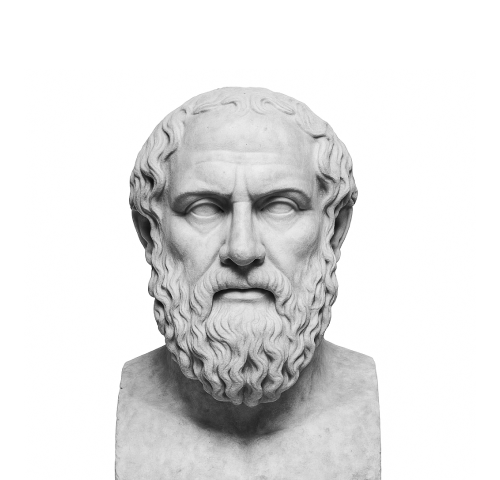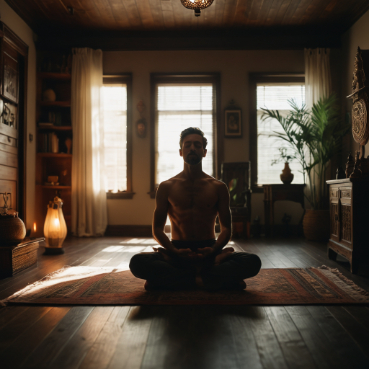The Stoic Daily Routine

Finding Serenity Through Consistent Practice
Adopting stoicism into our daily routines, guided by ancient wisdom from Marcus Aurelius, is a powerful way to enhance our lives. By integrating stoic principles like mindfulness and resilience into our routines, you can build a strong mindset to face life's challenges gracefully. You can embrace the stoic daily routine not only as a philosophy but as a practical guide for modern living, enabling us to navigate daily challenges with clarity and strength.
- Last Updated: July 15, 2025
- The Basics of Stoicism
- The Four Virtues Of Stoicism
- Benefits Of Following A Stoic Daily Routine
- How To Enhance Your Stoic Routine
- The Stoic Wake-Up
- Physical and Mental Preparation
- Setting Intentions for the Day
- The Stoic Morning Preparation
- Marcus Aurelius’ Morning Routine
- Accepting Adversity as Opportunity
- Maintaining Focus and Virtue in Daily Tasks
- The Stoic Break
- Stoic Practices for Beauty and Longevity
- Preparing for Sleep with Stoic Thoughts
- The Five Best Books On Stoicism
- Reflection and Gratitude
-
-
The Basics of Stoicism
Stoicism helps us understand our emotions, develop a peaceful personality, and face problems with calmness. With this routine, you can learn to live with purpose, handle stress more effectively, and cultivate a deep sense of inner peace.
- Understanding Stoicism: This mindset teaches the importance of recognizing what is within our control and letting go of what isn’t. This philosophy encourages us to focus our energy on our own actions and thoughts.
- Acceptance: A central stoic belief is calmly accepting what happens to us, understanding that external events are often beyond our control.
- Mindfulness and Reflection: It promotes daily reflection as a way to learn from our experiences and reactions.
- Practical Exercises: Adding exercises into your daily routine can help build resilience and emotional strength. The stoic routine encourages us to pause, reflect on our day, and prepare for what comes next with a clear mind.
- Stoicism in Daily Life: Whether it’s dealing with stress at work or personal setbacks, stoicism equips us with the perspective needed to face life’s problems with grace.
-
The Four Virtues Of Stoicism
Using stoic practices daily not only aids in personal development but also in creating a more just and compassionate world. Through the four main virtues of stoicism, including wisdom, courage, justice, and temperance, we can express the principles of stoicism in the modern age, making every day a step towards a more meaningful life.
- Wisdom: The virtue of wisdom is about knowing what is good, what is bad, and what is neither. It means learning to differentiate between what we can control and what we can’t.
- Courage: Courage in stoicism isn’t just about bravery in the face of danger, it’s also about the moral courage to do what is right, even when it’s difficult.
- Justice: Justice involves dealing fairly and kindly with others. It’s about acting with integrity and treating people with respect.
- Temperance: Temperance encourages us to resist excess and make rational choices, ensuring our desires don’t dictate our lives.
-
Benefits Of Following A Stoic Daily Routine
- Increased Resilience: It helps build mental toughness, enabling you to face life’s challenges.
- Improved Decision-Making: It teaches the importance of clear thinking and self-control, leading to better decisions in personal and professional life.
- Enhanced Focus: It encourages mindfulness and concentration, helping you to minimize distractions throughout your day.
- Greater Emotional Stability: You learn to understand and manage your emotions more effectively.
- Clarity of Purpose: It promotes a clear sense of direction and purpose in life.
- Stress Reduction: It can significantly lower stress levels, promoting a more balanced and peaceful mindset.
-
How To Enhance Your Stoic Routine
Following the stoic daily schedule can be tricky if you don’t have the necessary products. Here are some practical ways to enhance your stoic daily routine:
- Minimalist Clothing and Accessories: Opt for simple, durable clothing that not only simplifies your life but also keeps you focused on what’s truly important.
- Journals: Invest in high-quality journals designed for practices like morning and evening reflections. Features might include sections for setting goals, expressing gratitude, and daily self-reflection.
- Books: Focus on reading classic stoic books as they provide inspiration and actionable advice for living a peaceful life.
- Mindfulness Apps: Use apps like Headspace that offer guided meditations to help you stay present and develop mental resilience.
- Online Courses: Explore courses that include practical exercises and interactive learning opportunities.
- Fitness and Wellness Products: Consider products related to fitness or meditation like eco-friendly yoga mats or wellness supplements, to support your body and mind.
- Tech Wellness Tools: Manage digital distractions with products that help you focus on what matters. Blue light blocking glasses or screen time-limiting apps can be useful for maintaining digital well-being.
- Outdoor and Nature Exploration Gear: Equip yourself for time spent in nature, whether it’s for hiking, camping, or simply enjoying a peaceful retreat. Eco-friendly water bottles and portable hammocks can enhance your experience.
-
The Stoic Wake-Up
Focusing on a Stoic mindset can set a positive tone for the entire day. This routine is not just about the actions we take but also about cultivating a mindset that prepares us for whatever the day may hold.
- Start with Purpose: Begin your day by reminding yourself of your core values. Reflect on the kind of person you want to be and the goals you wish to pursue.
- Reflect on What’s Within Your Control: Spend a few moments considering what aspects of the upcoming day are within your control and what are not. It can help reduce anxiety and focus your efforts on what truly matters.
- Review Stoic Principles: Take a few minutes to read a passage from a Stoic text or a modern interpretation of Stoic philosophy. This can provide inspiration and practical advice for applying Stoicism throughout your day.
Practicing Stoicism daily through these morning rituals can transform our approach to life, encouraging us to live with purpose and a calm mind.
“At dawn, when you have trouble getting out of bed, tell yourself: “I have to go to work — as a human being. What do I have to complain of, if I’m going to do what I was born for — the things I was brought into the world to do? Or is this what I was created for? To huddle under the blankets and stay warm?”
Marcus Aurelius, Meditations 5.1 -
Physical and Mental Preparation
A morning routine filled with Stoic principles offers a blend of physical and mental exercises designed to prepare you for the day ahead. By embracing these morning rituals, you align yourself with the principles of modern Stoicism.
- Engage in Physical Exercise: Choose a form of physical activity that aligns with Stoic discipline, like walking or stretching. These exercises not only improve your physical well-being but also clear your mind, preparing you for the challenges ahead.
- Practice Morning Meditation: Dedicate a few minutes to meditation each morning. This can help you cultivate mindfulness, allowing you to approach your day with calmness and clarity.
- Journaling for Clarity: Start your day by jotting down your thoughts and intentions in a journal. This practice encourages mental clarity and focuses on personal growth and self-improvement.
- Set Daily Intentions: Reflect on the Stoic virtues and set intentions on how to apply them throughout your day. It could involve being more patient, showing kindness, or practicing gratitude.
- Mindful Routine Tasks: Approach your morning chores and preparations mindfully, whether it’s making coffee, showering, or getting dressed.
- Cold Shower Challenge: Seneca, a renowned Stoic philosopher, embraced a cold shower or plunge as it can refresh the mind and body. It serves as a reminder of our resilience and reduces our reliance on comfort. You can also start the cold shower challenge at your home by investing in a top-quality ice bath.
If you’re looking to energize yourself in the morning to jumpstart your stoic daily routine, here’s how to do the Cold Plunge.
-
Setting Intentions for the Day
The Stoic morning routine isn’t just about planning our tasks but preparing mentally for the day’s challenges through the practice of premeditatio malorum.
- Premeditatio Malorum: Spend a few moments considering the challenges you might face today. This isn’t about focusing on the negatives but preparing to meet them with strength.
- Set Positive Intentions: After considering potential challenges, set positive intentions for how you’ll address them.
- Visualize Your Day: Imagine your day unfolding with you following Stoic virtues. Visualizing success and the application of Stoic principles can boost your confidence.
- Reflect on Stoic Virtues: Think about the Stoic virtues of wisdom, courage, justice, and temperance. Choose one or more as a focus for your day, considering how you can add these qualities to your actions.
-
The Stoic Morning Preparation
The Stoic morning preparation isn’t just a routine but a deliberate set of practices aimed at setting a tone of simplicity and self-discipline.
- Simplicity in Dressing: Follow Seneca’s advice by choosing clothing that serves as protection against cold and personal discomfort rather than a means of extravagance.
- Choosing Healthy, Simple Foods: Musonius Rufus encourages Stoics to opt for inexpensive, easily obtainable, and healthy foods. Avoiding fancy or unhealthy meals not only demonstrates self-control but also supports long-term health.
- Avoid Early-Morning Digital Consumption: Resist the temptation to start your day by checking the latest news or scrolling through social media. It promotes Stoic self-discipline and helps maintain a positive outlook.
-
Marcus Aurelius’ Morning Routine— The Pioneer Of Stoicism
Marcus Aurelius has a Stoic morning routine that prepared him for his responsibilities as a leader and a Stoic practitioner. Even as a Roman Emperor, he had a simplistic morning schedule that helped him start his day efficiently.
- Waking Up Early: Marcus Aurelius valued the quiet of the morning to prepare for the day ahead, rising early to make the most of these precious hours.
- Journaling for Clarity: After waking up, he dedicated time to journaling, staring at a blank page before jotting down his thoughts. This practice helped clear his mind and set intentions for the day.
- Physical Exercise: Marcus Aurelius engaged in various physical activities such as boxing, wrestling, running, and horseback riding. These exercises strengthened his body and discipline.
- Cold Bath: Once his exercises were complete, he took a cold bath.
- Socializing with Fellow Citizens: Before his official duties, he spent time socializing, reinforcing his connection to the community and his role as a servant leader.
- Donning the Imperial Robe: Returning to the palace, he would change into his imperial robes, reminding himself that the purple garment was merely sheep wool dyed with shellfish blood, a reflection on humility and the nature of power.
- Diligent Work Ethic: Marcus Aurelius committed himself to work diligently, embracing his responsibilities with seriousness and without any complaints.
“When you arise in the morning think of what a privilege it is to be alive, to think, to enjoy, to love.”
Marcus Aurelius -
Accepting Adversity as Opportunity
Adopting a Stoic approach in the afternoon helps us remain adaptable and focused on what we can control. Following the Stoic daily routine helps us maintain a balanced perspective through all parts of the day.
- Pause and Reflect: When faced with a challenge, take a moment to pause. It allows you to respond rather than react, aligning your actions with reasoned choices rather than impulse.
- Identify What You Can Control: Remind yourself of the Stoic distinction between what is within your control and what isn’t. Focus your energy and efforts on your actions and responses.
- View Challenges as Lessons: Ask yourself what you can learn from the situation, how it can strengthen you, and how you can apply this knowledge in the future.
- Set Intentions for the Rest of the Day: Based on your afternoon experiences, set new intentions for the remaining hours. It might involve adjusting your approach or reaffirming your commitment to Stoic principles.
-
Maintaining Focus and Virtue in Daily Tasks
As the day progresses, maintaining focus and following Stoic virtues amid daily tasks can be tricky. The afternoon is a perfect time to recommit to the Stoic practice of mindfulness and virtue, ensuring that our actions reflect our deepest values.
- Revisit Your Intentions: Remind yourself of the intentions you set in the morning. This realignment can help steer your actions back toward your Stoic principles.
- Use Reminders: Keep quotes from Stoic texts visible in your workspace. These can serve as prompts to maintain Stoic composure and focus throughout the day.
- End the Day with Reflection: Before transitioning to your evening routine, take a moment to reflect on how well you maintained focus and virtue. Consider what went well and what could be improved.
-
The Stoic Break: Refreshment for the Soul
The Stoic break is an excellent addition to your afternoon routine, offering a moment of pause to refresh your soul and realign with your core values.
- Purposeful Pausing: Schedule a specific time for a short break, making it a non-negotiable part of your day. Use this time to detach from work or daily tasks, allowing your mind to rest.
- Mindful Breathing: Engage in a few minutes of deep breathing exercises and focus solely on your breath.
- Reflective Journaling: Keep a journal handy for your afternoon break. Reflect on the day’s events so far, jotting down any Stoic insights.
- Nature Connection: Try to spend a part of your break outdoors as it can help you connect with nature and find peace.
- Stoic Reading: Dedicate a few minutes to reading a passage from a Stoic philosopher or a modern interpretation.
- Gratitude Moment: Take time to mentally list things you’re grateful for. Gratitude is a powerful Stoic tool for shifting focus from our problems to our blessings.
-
Stoic Practices for Beauty and Longevity
The Stoic philosophy offers a unique perspective on beauty and aging. It encourages us to embrace natural processes with grace and dignity. The stoic evening routine is an opportunity to care for ourselves, allowing us to age gracefully and appreciate the beauty in simplicity.
- Natural Skin Care: Embrace natural skin care routines that focus on nourishment and protection. Stoicism teaches us to appreciate ourselves, choosing products that enhance rather than mask our natural beauty.
- Mindful Movement: Incorporate restorative exercises into your evening routine, such as yoga or stretching. These practices align with the Stoic value of maintaining physical health as a duty to oneself.
- Healthy Eating Habits: Choose evening meals and snacks that are wholesome and nourishing. Prefer foods that support long-term health, reflecting the Stoic pursuit of a balanced life.
-
Preparing for Sleep with Stoic Thoughts
Adding Stoic thoughts and practices into your evening routine serves as an exceptional tool for winding down the day in a meaningful manner.
- Reading Stoic Texts: Spend some time reading passages from Stoic philosophers. Let the timeless wisdom of Marcus Aurelius, Seneca, or Epictetus guide your thoughts toward reflection.
- Stoic Reflection: Reflect on the day’s events through the lens of Stoic virtues. Consider the moments where you embodied these principles and where you could improve.
- Limit Screen Time: Emulate Stoic discipline by limiting exposure to screens and digital content before bed.
-
The Five Best Books On Stoicism
Diving into Stoicism can transform the way we perceive and interact with the world. If you’re looking to deepen your understanding of Stoic philosophy, consider reading the following books.
- The Discourses of Epictetus: This book offers insight into the teachings of one of Stoicism’s most influential thinkers. Epictetus focuses on the power of personal choice and the importance of self-discipline.
- A Guide to the Good Life by William B. Irvine: Provides a modern interpretation of Stoicism, making it accessible and practical for contemporary readers. Irvine offers strategies for applying Stoic wisdom to daily challenges.
- Meditations by Marcus Aurelius: Comprised of the personal writings of the Roman Emperor, this book is a profound reflection on personal growth, resilience, and the pursuit of virtue. Aurelius’ thoughts reveal the application of Stoicism to leadership and personal development.
- Letters on Ethics: To Lucilius by Seneca: A collection of letters that offers rich insights into Stoic ethics and advice on living a good life.
- A New Stoicism by Lawrence Becker: Explores how Stoicism can be reinterpreted and applied in the context of modern society. Becker examines the foundations of Stoic philosophy and proposes a framework for modern Stoicism.
-
Reflection and Gratitude
The evening routine offers a sacred time for reflection and gratitude. This period of introspection allows us to review our day’s actions, celebrate our successes, and identify areas where we can grow, aligning with the Stoic commitment to continuous self-improvement.
- Review the Day’s Actions: Take time to think about the decisions you made throughout the day and reflect on how they aligned with Stoic virtues.
- Acknowledge Successes: Recognize and celebrate the moments where you successfully practiced Stoicism.
- Identify Areas for Improvement: Honestly assess where you might have fallen short of Stoic ideals. Consider these not as failures but as opportunities for learning.
- Express Gratitude: Reflect on the aspects of your day for which you are grateful as Stoicism teaches us to appreciate what we have.
- Plan for the Next Day: With the insights gained from your reflection, think about how you can apply Stoic principles more effectively tomorrow.
-
-
References
- Why You Should Make Time for Self-Reflection (Even If You Hate Doing It)
- Screen Time: The Good, the Healthy, and the Mind-Numbing
- Information on Screen Time
- The Meaning of Premeditatio Malorum: The Stoic Art of Visualisation
- What Is Stoicism? A Definition & 3 Stoic Exercises to Get You Started
- Stoicism
- The Ultimate Stoic Daily Routine
- How to Build a Daily Stoic Routine



















